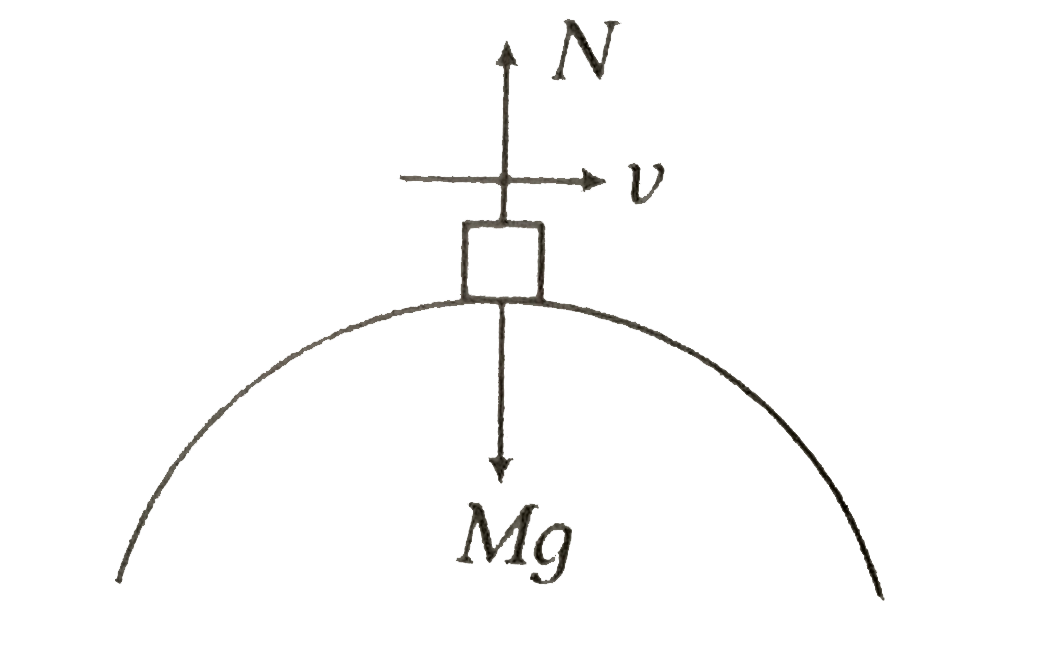A car when passes through a convex bridge exerts a force on it which is equal to
Mg+Mv2r
Mv2r
Mg−Mv2r
None of these
The correct Answer is:C
Mg−N=Mv2r
or N=Mg−Mv2r

Topper's Solved these Questions
- CIRCULAR MOTIONBook:DC PANDEYChapter:CIRCULAR MOTIONExercise:Match the columns
Explore 3 Videos
- CIRCULAR MOTIONBook:DC PANDEYChapter:CIRCULAR MOTIONExercise:Medical entrances s gallery
Explore 19 Videos
- CIRCULAR MOTIONBook:DC PANDEYChapter:CIRCULAR MOTIONExercise:Check point
Explore 45 Videos
- CENTRE OF MASS, LINEAR MOMENTUM AND COLLISIONBook:DC PANDEYChapter:CENTRE OF MASS, LINEAR MOMENTUM AND COLLISIONExercise:Level 2 Subjective
Explore 21 Videos
- COMMUNICATION SYSTEMBook:DC PANDEYChapter:COMMUNICATION SYSTEMExercise:Only One Option is Correct
Explore 27 Videos
Similar Questions
Knowledge Check
A car when passes through a bridge exerts a force on it which is equal to
AMg+mv2TBmv2TCMg−mv2rDNone of theseWhen current passes through a conductor,
Ait creates an electric firld around it, directed towards the conductorBit creates an electric field, directed away from the conductorCnone of the aboveDAll of theseWhen a ray passes through a prism,
Ait goes undeviatedBit remains parallel to the baseCit bends towards the baseDnone of these
A car of mass m moving over a convex bridge of radius r .Find the normal reaction acting on car when it is at bighest point the bridge.
View SolutionA car moves at a constant speed on a straigh but hilly road. One section has a crest and dip of the 250m radius.
(a) As the car passes over the crest the normal force on the car is half the 16kN weight of the car. What will the noraml force on the car its passes through th ebottom of the dip?
(b) What is the greatest speed at which the car can move without leaving the road at the top of the hill ?
(c) Moving at a speed found in part (b) what will be the normal force on the car as it moves through the bottom of the dip? (Take, g=10m/s2)
View SolutionWhen red light passing through a convex lens is replaced by light of blue colour, how will the focal length of the lens change ?
View SolutionWhen no current is passed through a conductro
View SolutionWhen steam is passed through zinc then
View Solution

